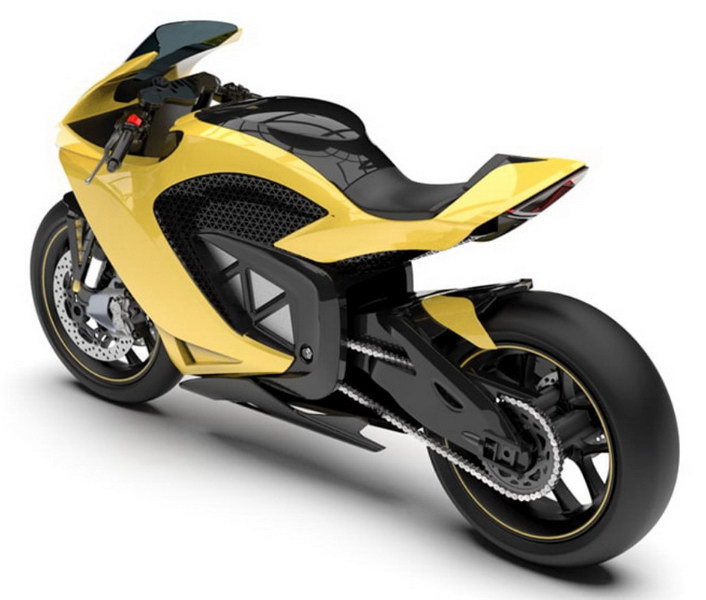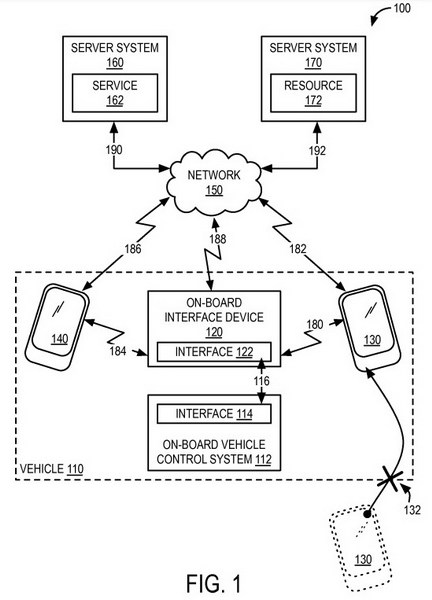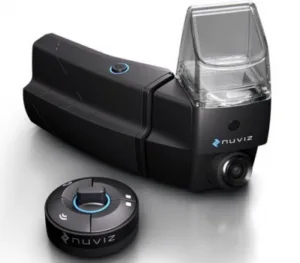Motorcycles and modern display technology are not strangers to each other. While looking into the background for this Display Daily, I counted at least seven major articles Display Daily has published in the last year that focus on presenting information to motorcycle riders.

Because a motorcycle rider should always keep his eye on the road if he wants to live long enough to retire, Head-Up Displays (HUDs) that allow him to watch the road but still keep track of important data are common, or at least commonly talked about. Since most motorcycle riders wear helmets, it makes sense to build the HUD into the helmet, not attach it to the bike.
 Nuviz Motorcycle HMD and its controller. (Credit Nuviz)
Nuviz Motorcycle HMD and its controller. (Credit Nuviz)
The Nuviz Helmet Mounted Display (HMD) represents pretty much the current state-of-the-art in commercially available motorcycle HUDs. The $699 Nuviz unit consists of three components: an LCoS-based see-through AR display system that mounts on the user’s helmet; a small control unit that mounts on the motorcycle handlebars where it can be operated by the rider’s thumb without taking his eyes off the road; and a user-supplied smartphone which can be either an Android device with Android OS 4.4.2/KitKat (or newer) or an iPhone/iPad with iOS 10.2 (or newer). The three components are connected together via Bluetooth Low Energy. The helmet-mounted unit also contains a HD action camera, GPS, gyroscopes, accelerometers, a Qualcomm quad core processor and a replaceable battery said to be good for eight hours of riding. According to Nuviz, the unit can be used while riding your motorcycle in the rain.
 LiveMap compares its helmet to the helmet for a F-35 fighter helmet. (Credit: LiveMap)
LiveMap compares its helmet to the helmet for a F-35 fighter helmet. (Credit: LiveMap)
LiveMap is one of several companies working on the next-generation of motorcycle HUDs, where all the components are integrated into the helmet. LIveMap modestly compares their helmet to the $600,000 VR/AR helmet developed for pilots flying the F-35 fighter jet. In fact, they say their helmet has the advantage of being wireless while the F-35 helmet is wired to the airplane. LiveMap, based in Moscow, has been working on their helmet since 2013 and a year ago Art Berman wrote a Display Daily about their “C” prototype helmet. Their prototype “D” was shown at CES 2019 and they are currently working on the fully-functional prototype “E”. One important difference between the recent versions and the 2013 version is the helmet visor is used as the AR combiner. This means there is no separate see-through combining element in the rider’s field of view to distract him.
 Layout of the current generation of the LiveMap helmet, showing how the visor is used as the combiner. (Credit: LiveMap)
Layout of the current generation of the LiveMap helmet, showing how the visor is used as the combiner. (Credit: LiveMap)
LiveMap is accepting pre-orders now and expects to start shipping units to the English speaking world by the end of 2019. Since the LiveMap helmet is voice controlled rather than thumb controlled, it is understandable they would release different versions of the helmet with different languages at different times. Since this is a full-fledged motorcycle helmet, the company will obtain the necessary safety certificates before release: USA DOT, European ECE 22.05 and Japanese JIS T 8133. LiveMap posted a YouTube video in 2013 to explain their helmet. A newer 22 minute video posted in 2019 shows virtually the same design and, among other things, explains why it has taken so long to bring the helmet to market. One comment posted on the LIveMap YouTube channel was about the lack of a rear-view camera in the design.
By the way, LiveMap uses the catch phrase “Ride a Bike Like a Fighter Pilot!” If you ride a bike as aggressively as a F-35 fighter pilot flies, then you need the best possible technology if you want to live long enough to see tomorrow morning, let alone live long enough to retire.
 Damon is incorporating 360° radar coverage, vision systems, AI and 5G connectivity into its motorcycle safety system. (Credit: Damon Motorcycles)
Damon is incorporating 360° radar coverage, vision systems, AI and 5G connectivity into its motorcycle safety system. (Credit: Damon Motorcycles)
Damon Motorcycles, based in Vancouver, BC, is taking a larger view of motorcycle safety and looking beyond just the motorcycle helmet and HUD. They have developed a system they call the Advanced Warning System for Motorcycles (AWSM). This system combines inputs from vision systems and 360° radar coverage around the motorcycle and uses Artificial Intelligence (AI) to evaluate if any of the nearby tracked objects represent a threat to the motorcycle rider. If they do represent a collision danger, the system alerts the rider using haptic and/or visual feedback. This will allow the rider to maneuver to avoid the threat. Damon Motorcycles Founder and CEO Jay Giraud will bring a motorcycle on stage to demonstrate the system at TechCrunch on July 10th in San Jose. (Sorry I won’t be there!) Following TechCrunch, Damon will take the prototype unit on a West Coast tour giving demonstration rides.
Giraud said:
“We built what every rider dreams of: a motorcycle that can adapt to the changing road conditions, perfectly suited for inner city commutes, winding back roads and everything in between. Having a Damon motorcycle means having an upright commuter bike, a forgiving touring bike and an exhilarating sport bike, all-in-one.”
The company describes its technology as:
“Like a modern fighter jet, Damon’s 360º Advanced Warning System for Motorcycles (AWSM) uses embedded radar, cameras and other sensors to track the speed, direction and velocity of up to 64 objects at a time.
“Using an onboard neural net, it anticipates accidents and warns the rider, allowing them enough time to take evasive action.
“Riders are alerted only when necessary, with a number of multimodal feedback mechanisms: LEDs, vibrating handlebar grips, and a digital rearview mirror fed by the embedded rear-facing camera.”
Note the repeat of the LiveMap fighter jet motif – this is how a lot of motorcycle riders like to think of themselves. Very high performance motorcycles are sometimes called “rocket bikes.”
Clearly Damon is aware of the dangers to a motorcycle rider of a false-positive warning when it used the phrase “only when necessary.” If a rider takes evasive action based on a warning where there is no actual threat, that alone could be enough to cause an accident – and a lawsuit against Damon. While Damon does not describe a motorcycle HUD, clearly it would be in any production system, to show the digital rear view mirror if nothing else. A finished, marketable system is likely to include all the features of the Nuviz or LiveMap systems, including navigation, music, motorcycle status, etc.
 Information uploaded to the Damon cloud is analyzed and used to refine the AI safety algorithms. (Credit: Damon Motorcycles)
Information uploaded to the Damon cloud is analyzed and used to refine the AI safety algorithms. (Credit: Damon Motorcycles)
The Damon system uses AI in two ways. First, AI in the form of a neural net is built into the local controller, to determine if objects detected by the sensor system represent a danger to the motorcycle rider. If there is a threat, the danger is reported to the rider who can then take appropriate action. In addition, the system continuously uploads the environment surrounding the motorcycle via 5G, where available, and presumably over 4G elsewhere. The data from not just one rider but from all riders using the Damon AWSM system is then used as training input for a machine learning system that can refine the AI software to better separate threat from non-threat environments. After it is thoroughly tested by Damon, this refined neural net AI software can be downloaded to all Damon AWSM systems, further improving safety for all riders.
 The Damon demonstration system is a custom, high-performance electric motorcycle equipped with the AWSM system. (Credit: Damon Motorcycles)
The Damon demonstration system is a custom, high-performance electric motorcycle equipped with the AWSM system. (Credit: Damon Motorcycles)
The local system must, of course, react in real time, with latencies in the mS time scale, to provide timely warning to the motorcycle rider. The 5G upload, machine learning, testing and download cycle does not take place in real-time and is intended to improve the long term safety of all AWSM users. In the still longer term, Damon says this uploaded data, which would include both threats and rider reaction to those threats, could feed back to the motorcycle manufacturers to allow them to design safer motorcycles.
 Damon has at least four granted patents that apply to the AWSM system, including US 9,135,758.
Damon has at least four granted patents that apply to the AWSM system, including US 9,135,758.
At this point, Damon’s target market is not individual motorcycle riders. Instead, they would like to license the system to motorcycle manufacturers, motorcycle accessory manufacturers and other vehicle manufactures. The four patents I found for the system are all written in terms of “vehicles” not “motorcycles.” For example, in the figure, 130 and 140 are two smartphones belonging to the driver and passenger. According to the company, major police forces are scheduled to test ride and pre-order Damon’s 360° AWSM for their fleets. Motorcycle manufacturers have also scheduled test rides to consider factory integration on their next generation of motorcycles.
If I were (still) a motorcycle rider, I would have a serious privacy concern about the Damon system. Would I want to upload to Damon’s cloud everywhere I went, everything I saw going there and everything around me while riding my motorcycle? Was everything I did as a kid riding a motorcycle legal? –Matthew Brennesholtz

